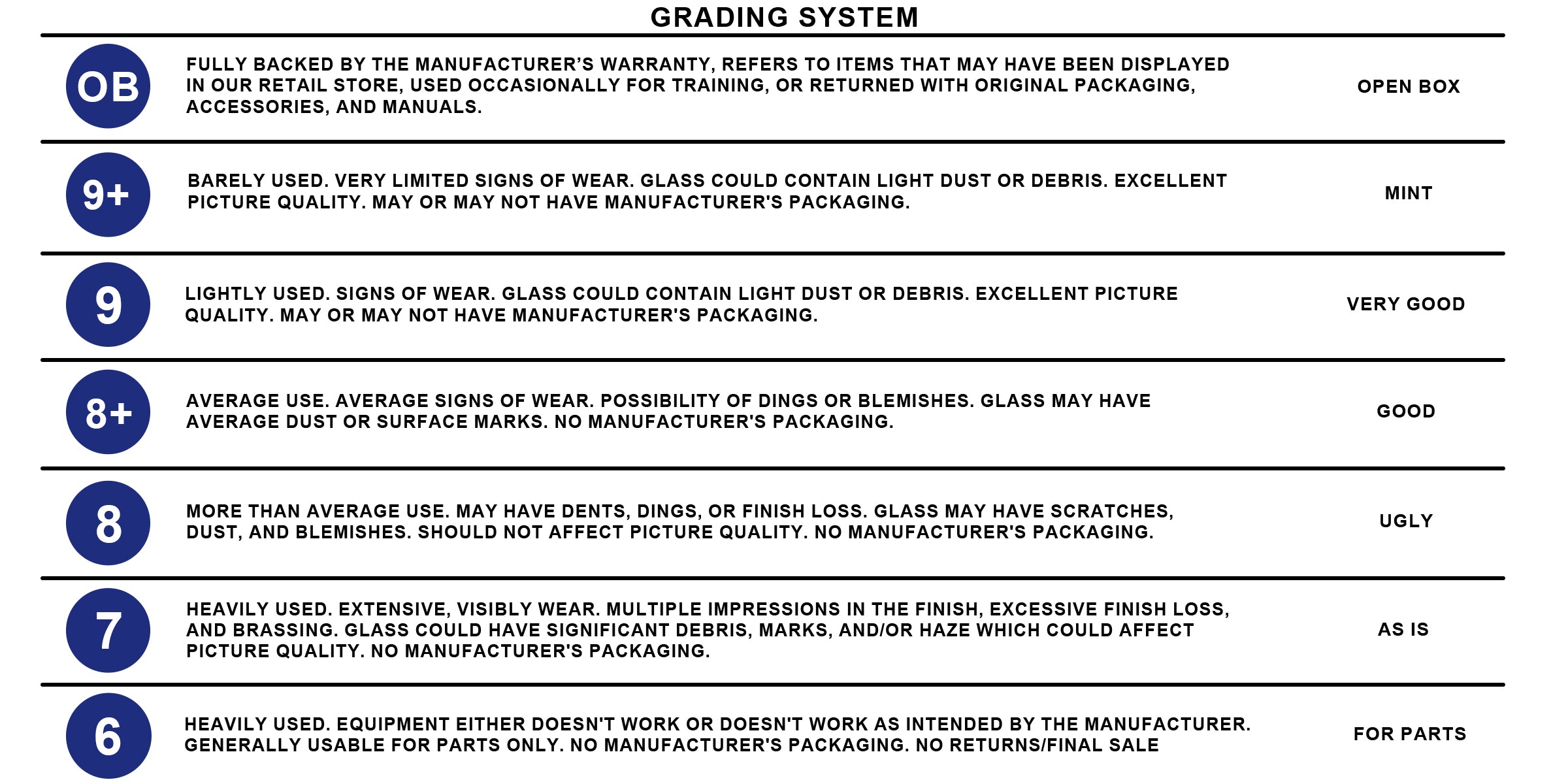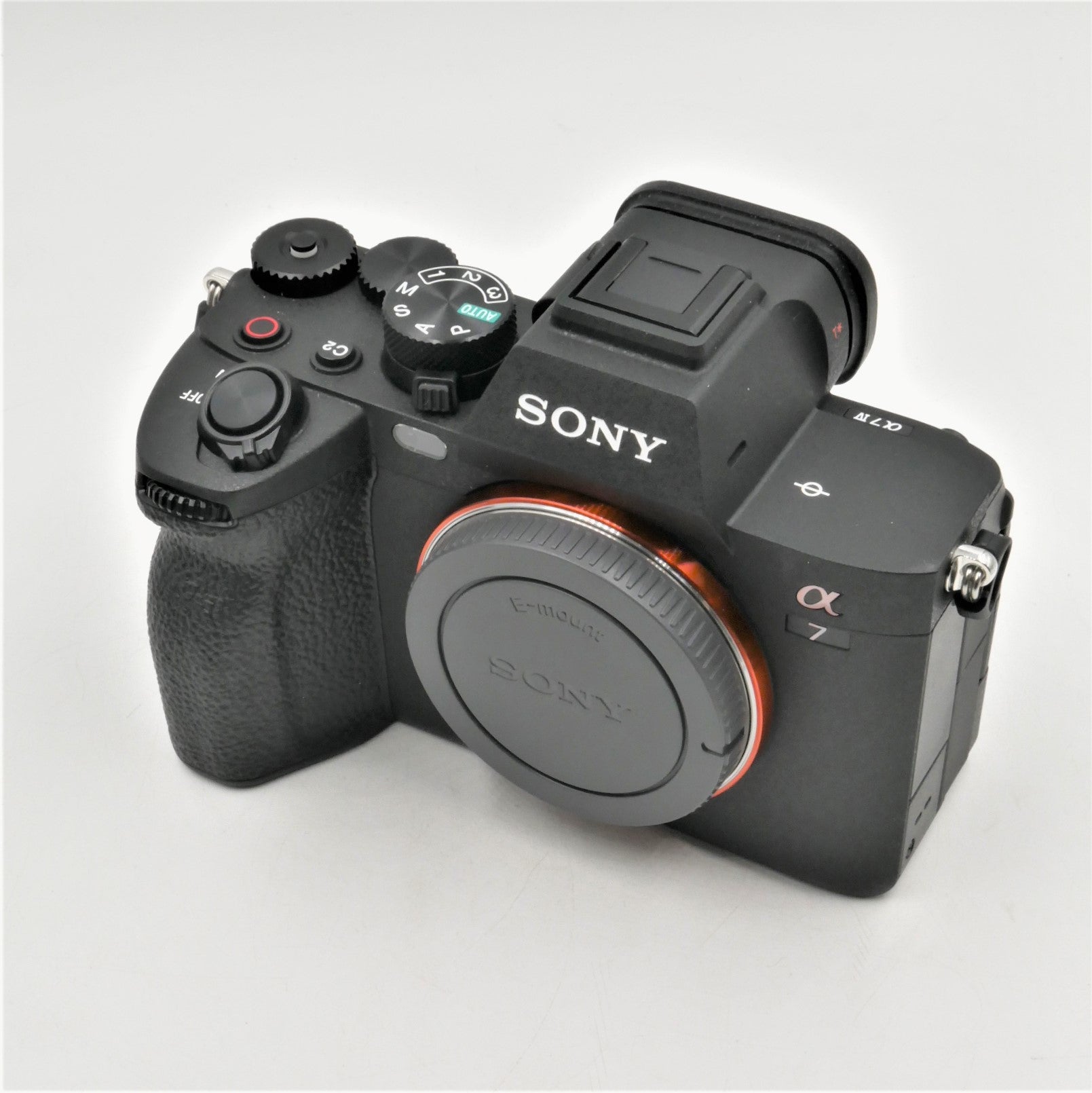
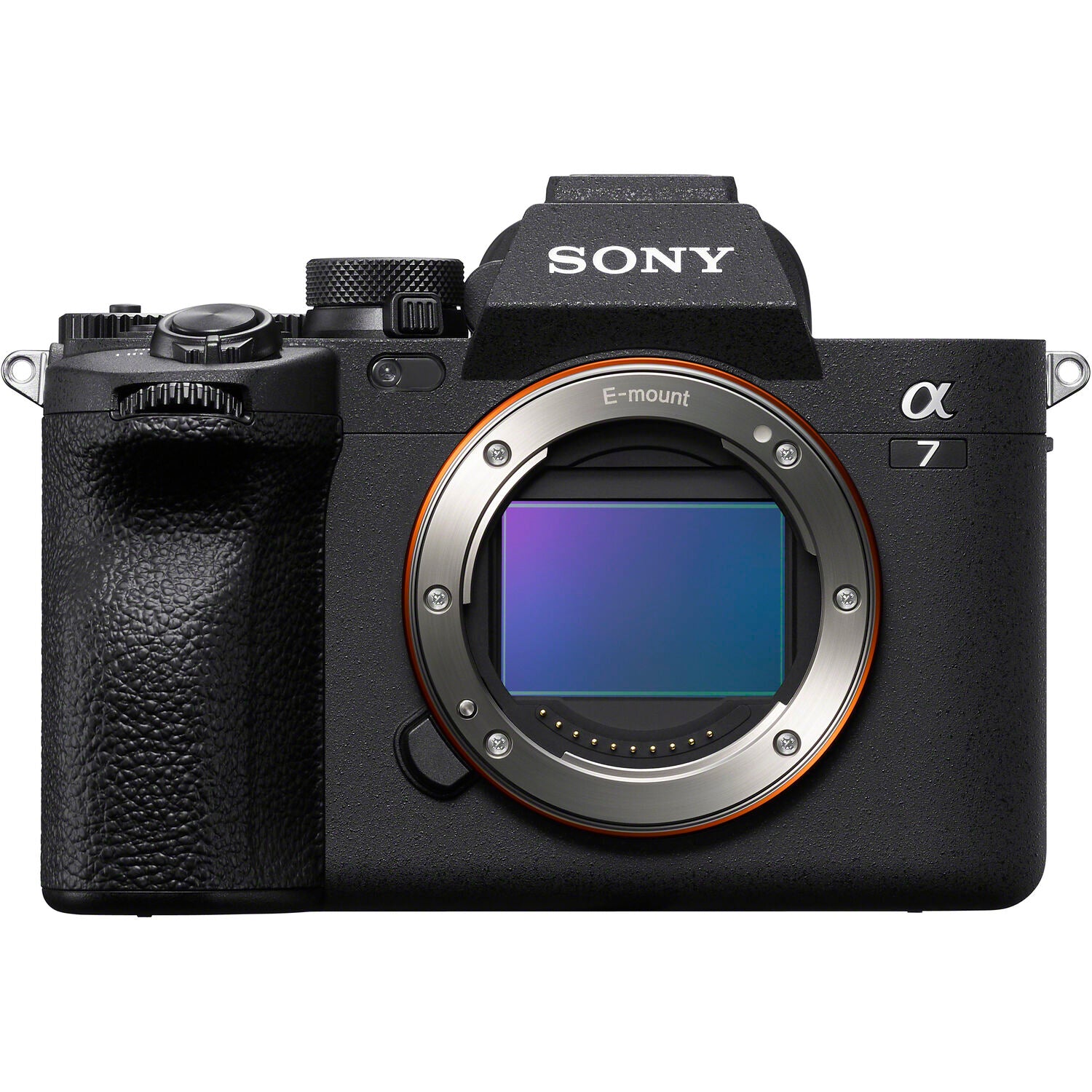
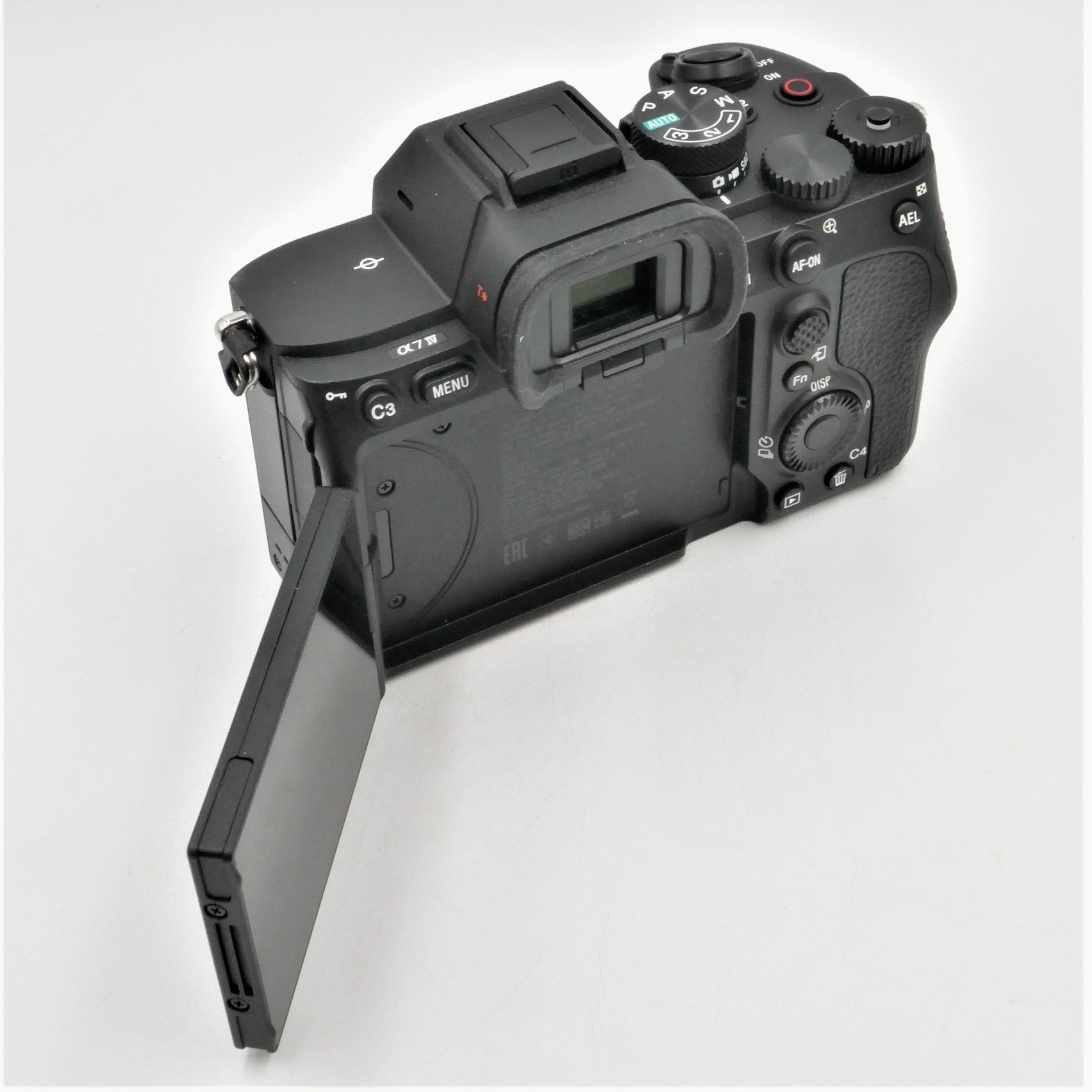
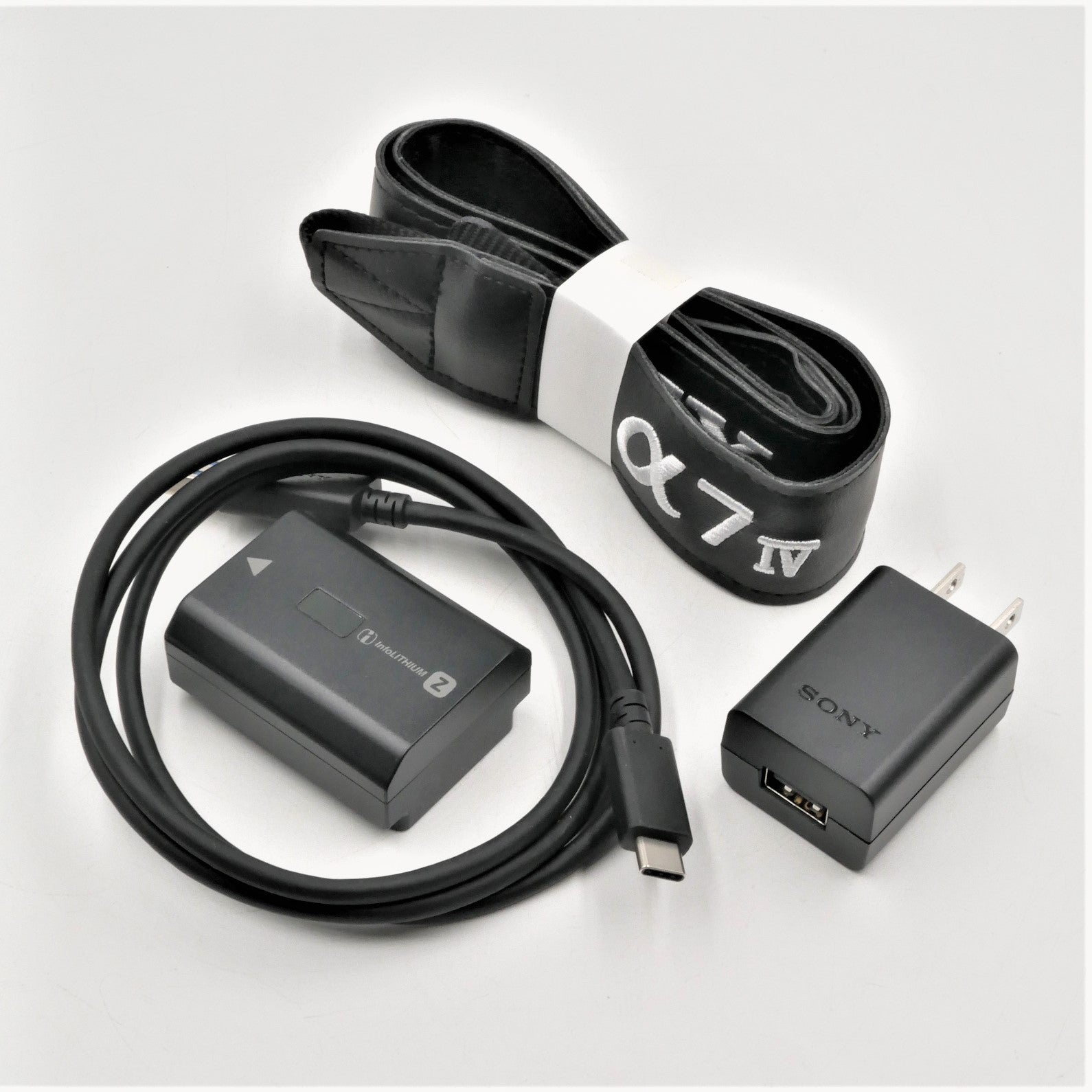
Sony Alpha a7 IV Mirrorless Digital Camera | Body Only **OPEN BOX**
Sony Alpha a7 IV Mirrorless Digital Camera | Body Only **OPEN BOX**
STORE
54 Orchard Street
Ground Floor
New York NY 10002
United States
The Sony a7 IV is a versatile camera that transcends fundamental capabilities, excelling in both still photography and video production. As an advanced hybrid mirrorless camera, it offers impressive resolution and autofocus performance that attract photographers, while also providing robust 4K 60p video recording, making it an excellent choice for filmmakers and content creators alike.
 33MP Exmor R BSI CMOS Sensor
33MP Exmor R BSI CMOS Sensor
The recently introduced 33MP Exmor R BSI CMOS full-frame sensor incorporates a back-illuminated architecture that enhances clarity, minimizes noise, and delivers vibrant color reproduction. This innovative design is particularly advantageous for low-light environments and operates effectively within a wide sensitivity spectrum of ISO 100-51200. Additionally, the sensor achieves an exceptional dynamic range of around 15 stops, allowing for file recording in raw, JPEG, or the 10-bit HEIF format.
BIONZ XR Processor
The flagship-class BIONZ XR engine provides high-speed image processing capabilities, facilitating rapid continuous shooting, 4K video recording, and enhanced autofocus tracking performance. This swift processing also minimizes rolling shutter effects and other motion distortions, ensuring a clear representation of moving subjects.
Regarding shooting speeds, the combination of the sensor and processor allows for up to 10 frames per second, utilizing either the mechanical or electronic shutter with autofocus and auto-exposure activated. Additionally, the buffer supports the recording of up to 828 consecutive uncompressed raw and JPEG frames when employing a CFexpress Type A card.
Video Recording
4K 60p Video Recording in 10-Bit
The advanced 33MP sensor, combined with rapid processing capabilities, enables UHD 4K 30p XAVC HS 10-bit recording that utilizes the entire sensor width, resulting in 7K oversampling that enhances sharpness and realism. Additionally, there is the option for oversampled 4K recording through a 4.6K capture area with a Super 35 crop, allowing for UHD 4K output at rates of up to 60p in 10-bit. The absence of recording time limitations facilitates unlimited clip lengths, and the camera's design incorporates an enhanced heat-dissipating structure to support extended recording durations, such as over one hour of continuous 4K 60p 10-bit 4:2:2 recording. The a7 IV features two codecs tailored for various workflows: XAVC HS, which employs HEVC/H.265 encoding to preserve more detail at lower bitrates, and XAVC S-I, an intraframe codec that ensures consistent performance and quality at bitrates reaching 600 Mb/s.
S-Cinetone, S-Log3, and Other Color and Gamma Controls
S-Cinetone is designed to provide vibrant colors and a healthy skin tone that aligns with the outputs of the FX9 and FX6 cameras, as well as the a1 and a7S III. This technology is derived from the professional Cinema Line cameras, including the VENICE. The S-Cinetone color profile is characterized by its natural mid-tones, gentle hues, and particularly well-managed highlights. Additionally, HLG (Hybrid Log-Gamma) support enables recording in a broad color gamut, facilitating the creation of HDR-ready content directly from the camera. Furthermore, S-Log3 is available, allowing for a dynamic range exceeding 15 stops, which enhances grading control in the shadow to mid-tone areas of the image.
Fast Hybrid AF System
 Real-time Tracking and Real-time Eye AF
Real-time Tracking and Real-time Eye AF
Drawing from the advanced AF system of its flagship model, the a7 IV features enhanced tracking and subject detection capabilities that swiftly lock onto subjects and accurately refine focus on identified eyes and faces. The Real-time Tracking system employs artificial intelligence to recognize color, patterns, and distance information, ensuring high precision and rapid focusing. In addition to tracking, the Real-time Eye AF system enhances focusing accuracy by identifying the eyes of humans, animals, and birds, ensuring critical sharpness. Notably, Real-time Eye AF retains focus on a subject's eye even when they exit and re-enter the frame, facilitating effective shooting in dynamic situations.
AI-Based Autofocus
Encompassing around 94% of the image area, the Fast Hybrid AF system features 759 phase-detection points, enabling rapid and accurate focusing across diverse lighting environments, with a sensitivity reaching as low as -4 EV. This focusing mechanism is accessible in all recording modes, enhancing both video and still photography applications.
 AF During Video Recording and Additional Focusing Modes
AF During Video Recording and Additional Focusing Modes
The Real-time Eye AF feature is fully operational during video recording, enabling the detection and tracking of human, animal, and bird eyes while filming. To enhance control over focus transitions during recording, users can utilize seven different AF transition speeds and five levels of AF subject shift sensitivity, allowing for precise adjustments in the speed and smoothness of focus changes. The Focus Map offers a distinctive method for visualizing depth of field, functioning similarly to peaking by providing a colorful overlay that highlights which areas of the scene are in front of or behind the focus point, based on the selected aperture. Additionally, the AF Assist feature, inherited from the FX6 digital cine camera, allows for a seamless transition to manual focus control, enabling users to adjust the focus position intuitively while working with autofocus. This feature facilitates quick adjustments of selective focus among various subjects within a scene during recording.
A distinctive approach to address the performance of specific lenses during focus adjustments, Focus Breathing compensation automatically facilitates smooth transitions in focus while preserving a uniform field of view when altering the focus position throughout a shot. This mode slightly crops the image and rectifies any identified shifts in composition that occur during the focusing process.
Viewfinder and LCD Screen
The enhanced QVGA OLED Tru-Finder EVF boasts a resolution of 3.68 million dots, which is approximately 1.6 times greater than that of its predecessor, resulting in sharper and clearer visuals. This viewfinder accommodates both standard frame rates of 60 fps and 120 fps, ensuring smooth motion rendering. Its physical attributes include a long eye point of 23mm, a magnification of 0.78x, and a field of view measuring 37.3°.
Ideal for vlogging and other self-recording applications, the side-opening 3.0-inch vari-angle articulating screen, with a resolution of 1.03 million dots, can be positioned in a front-facing manner or tilted up or down to facilitate shooting from elevated or lowered angles. Additionally, this LCD features touchscreen capabilities, allowing for intuitive control during shooting and seamless navigation through menus.
 Ports and Interface
Ports and Interface
The full-size HDMI A port ensures a more dependable connection when interfacing with external recorders. Additionally, a USB 3.2 Gen 2 Type-C port has been incorporated alongside a micro-USB port, enhancing tethering support with increased speed and reliability. This USB Type-C connection enables the camera to be charged or powered directly from the host power source during use. The inclusion of both 3.5mm headphone and external microphone ports allows for enhanced control over audio recording. The Multi Interface Shoe is compatible with the optional ECM-B1M Shotgun Microphone or the XLR-K3M XLR Adapter Kit, which deliver superior audio quality by transmitting a digital audio signal to the camera rather than an analog one. Furthermore, the USB Type-C port can be utilized with an optional Ethernet wired LAN adapter to facilitate 1000BASE-T connectivity, wired remote shooting, or FTP file transfers.
5-Axis SteadyShot INSIDE Image Stabilization
The advanced 5.5-stop effective 5-axis SteadyShot INSIDE image stabilization system effectively addresses five distinct types of camera shake that may occur during handheld photography and videography. This feature empowers users to utilize any lens, including adapted ones, for critical shooting without the risk of blur caused by camera movement. For longer focal lengths, the system adeptly corrects for pitch and yaw adjustments. In contrast, macro and high-magnification photography will benefit from the added horizontal and vertical shift compensation. All shooting techniques will gain from the roll compensation feature. Notably, all five axes of stabilization remain operational at all times, even when utilizing third-party lenses and adapters or lenses equipped with built-in optical stabilization. Furthermore, for video applications, an Active IS mode is available, providing enhanced stabilization techniques for achieving exceptionally smooth footage directly from the camera.
Advanced External Flash Control
The P-TTL flash metering system is designed to accommodate the use of flash when capturing fast-moving subjects, allowing for adjustments between exposures in low, medium, or high-speed continuous shooting modes. This capability ensures consistent illumination during low-light bursts and is particularly advantageous in environments with fluctuating light or dim conditions. Additionally, the enhanced flash control system minimizes flash trigger delay, utilizes the camera's automatic white balance data for accurate color reproduction, and enables the direct adjustment of specific flash and transmitter units through the camera's interface.
 Wireless Connectivity and Streaming
Wireless Connectivity and Streaming
The integrated Wi-Fi functionality allows for remote control of the camera and facilitates the immediate sharing of images to mobile devices for direct online distribution. Additionally, compatibility with both 2.4 and 5 GHz frequency bands supports wireless tethered shooting. This connectivity also enables remote management of the camera. The Imaging Edge mobile application is enhanced by Bluetooth technology, ensuring a stable connection between the camera and the mobile device. Furthermore, it supports Visual Story, which simplifies the cloud-based delivery of photos and videos right after they are captured.
Live streaming can be conducted directly from the camera by connecting it to a computer or a compatible mobile device through a USB interface. This setup enables the utilization of the camera's video and audio features for live social media broadcasts and video conferencing. The camera offers various recording settings, including 4K at 15 frames per second, Full HD at 60 or 30 frames per second, and HD at 30 frames per second. Additionally, it includes internal Creative Look and Soft Skin effects to enhance image quality directly from the camera. Internal recording to a memory card is also supported while live streaming. Furthermore, the camera adheres to UVC and UAC standards, ensuring superior picture and sound quality during streaming.





